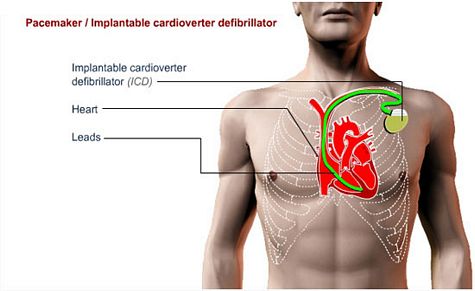What is CARDIAC ARREST?
A sudden discontinuation of effective pumping activity of the heart. This is mostly due to ventricular fibrillation (very poor ineffective contractions of the lower heart chambers), or asystole of ventricles (complete stoppage of contractions of the lower heart chambers).
Why does this happen and how may it affect the patient's health?
It is almost always due to insufficient blood and oxygen supply via the coronary arteries, which provide the heart muscle with oxygen. It may be caused by conduction abnormalities such as heart block, or disease of the aortic valve. The incidence of cardiac arrest amongst unselected adults in the population is 2 per 1000 population.
What symptoms may the patient experience?
- Sudden loss of consciousness
- On examination of patient, there is absence of pulses in arms, legs and neck
- There is no evidence of heart sounds when listening with a stethoscope
- Sudden cardiac arrest may be preceded by days or weeks of increasing chest pain, difficulty with breathing or getting tired easily
- Cardiac arrest is by definition an abrupt episode
How is the diagnosis made and what special investigations are required?
ECG of the heart shows no activity. There may be ventricular fibrillation. The heart muscle is basically vibrating (which is called fibrillation in cardiology) and not contracting effectively.
There may be evidence of ventricular instability, showing a very fast heart rate with frequent ectopic heartbeats (electric impulses that originate from outside the SA node, which is the primary pacemaker of the heart), resulting in
- Ventricular fibrillation (irregular contraction of lower heart chambers), or
- Complete asystole of the ventricles (no contraction of lower heart chambers at all)
What is the treatment and prognosis?
Prompt treatment may save a patient's life. A thump on the chest may restore the rhythm of the heart.
In event of ventricular fibrillation (irregular and ineffective lower heart contractions), the medical protocol followed is DC shock to the heart (using a defibrillator), followed by Lignocaine to stabilize the heart rhythm. Otherwise circulation must be maintained by cardiac massage. Artificial ventilation of lungs is also essential until the patient is breathing unaided.
During asystole (when heart stops contracting): Injection of adrenaline directly into the heart muscle may also restore the rhythm.

The prognosis depends, to a large extent, on
- Where the cardiac arrest takes place (e.g. at home; at work; when doing sport; in the hospital). If it happens inside the emergency room of a hospital, the prognosis is significantly better than when it happens at home or elsewhere (in fact, outside of an emergency hospital setting, the prognosis is poor)
- The underlying cause (disease process that precipitated the cardiac arrest)
Progression to biologic death is dependent on the
- Mechanism of cardiac arrest, and
- Length of time form occurrence to intervention
© 2003 Prometheus™ Healthcare (Pty) Ltd
|